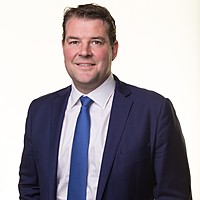Can negative yielding bonds deliver positive returns?
President Trump’s announcement of additional tariffs imposed on Chinese goods early in August set the tone for a material flight to quality rally across global bond markets. China responded by adding tariffs to US goods, continuing to operate in a ‘tit for tat’ exchange that will further prolong the trade war and depress global economic sentiment. Seemingly a period of negotiation and compromise in the trade war has now ended and with these additional developments a likely acknowledgment from both sides that they are prepared to endure a protracted fight.
This is likely to further depress capital spending intensions, as companies struggle to identify which jurisdictions may be subject to tariffs when forward planning. Our central expectation remains that the trade war is a complex fight over not only trade, but technology and the control of artificial intelligence, a fight neither side can afford to lose. Trump’s plans may well be to broker a deal ahead of his November 2020 re-election campaign to try and slingshot the US economy ahead of election day, but it was China who rolled on the first version of the deal in May at the 11th hour when it came down to changing Chinese domestic law and making the deal enforceable.
US Treasury curve deeply inverted signalling severe recession risk, with the US Federal Reserve (US Fed) funds now the highest interest rate in the developed world ex Italy.
The US Treasury bond curve finally inverted in the month of August between the 10 year and 2 year Government Bond yields (i.e. 10 year Government Bonds now yield less than 2 year bonds). Such previous episodes have historically had exceptional predictive ability at forecasting US recessions shortly thereafter with only one false negative in 1967. We actually favour monitoring the 3 month rate versus the 10 year bond rate, noting that this curve has been inverted since 23 May 2019. We have written previously at length about the flattening term structure curve and why you would likely hear more about this in time.
At the time of writing, the rate of short-term funding in the US is higher than every bond of all maturities (long and short dated) in the G7, except for long dated Italian bonds, which are currently subject to significant political risk. That is quite extraordinary given the hugely powerful signaling from global bond markets that future expected growth and inflation remains deeply depressed, whilst also suggesting that the US Fed is badly behind the curve and needs to cut rates aggressively to avoid recession.
Negative yielding bonds deliver best returns.
As global central banks continue to experiment with negative interest rates, it’s ironic that some of the best performing bond markets this year have also been the most negative in yield. This is a difficult notion to fathom, that a bond already delivering a slightly negative return, if held to maturity, can produce significant positive returns – Switzerland’s bond markets are the most negative and the year to date return is around +12.5%. Negative yielding bonds have been around for more than 5 years now, ever since the European Central Bank and the Bank of Japan took their policy rates below zero. An extension of those negative interest rate policies coupled with depressed inflation expectations is redefining investors’ expectations of the performance of fixed income as an asset class. Thankfully, Australia looks some way off needing to embark on any such negative interest rate policy, but the actions of others continue to make Australian Government Bonds highly desirable on a global scale given their excellent liquidity and highest AAA rating.
RBA Governor Lowe suggests flexibility in inflation outcomes at Jackson Hole, suggesting a pause in rate cuts for domestic only reasoning. JCB still expects additional rate cuts from global factors.
We have long argued that the RBA would cut rates from 1.50% to 1.00% on domestic factors, and then additionally cut rates from 1.00% to 0.50% due to global factors. They expect those additional rate cuts either very late this year or in the early part of 2020. We found a recent speech from RBA Governor Lowe at Jackson Hole (a Central Banking conference in Wyoming USA) of interest as he suggested the RBA may use ‘flexibility’ in judging its inflation outcomes. We see this as allowing for a pause in the interest rate cutting cycle as expected, where the RBA will not be wedded to below target inflation to further cut the policy rate.
We expect the RBA to remain firmly focused on achieving full capacity in the economy, in line with additional reductions in the unemployment rate below 4.50% (currently 5.20%) as telegraphed by the RBA’s Lucy Ellis earlier this year.
Avoid getting caught in the trap
Stay up to date with our latest insights by clicking 'follow' below and you'll be notified every time we post a wire.

